Abstract
It is often impossible to measure the reference standard of cardiorespiratory fitness (the maximum oxygen intake) directly, and there is thus a need for subsidiary standard procedures based on body responses to submaximal exercise. In order to reach agreement on such procedures, a recent international working party has compared a variety of possible tests involving step, bicycle, and treadmill exercise; criteria of comparison included the extent of habituation and learning with each procedure, the physiological responses, and practical considerations. There was little to commend submaximal exercise on the treadmill. Anxiety and learning were least on the bicycle ergometer, but significant anaerobic metabolism developed at loads of more than 55% of aerobic power; the main role of the bicycle was thus in laboratory tests requiring arm immobilization. The step test was cheap and portable, subjects showed relatively little anxiety or learning, and good-quality electrocardiograms were obtained: it thus seemed the procedure of choice for field tests. The results of all forms of submaximal test should be extrapolated to maximum oxygen intake in order to overcome difficulties arising from differences in the age and fitness of subjects. Four common extrapolation procedures, based respectively on one to four measurements of oxygen consumption and pulse rate, yielded similar predictions of maximum oxygen intake. A single progressive test, in which the exercise load was increased at the end of every third minute, gave an identical prediction of maximum oxygen intake to that obtained from a series of 4 discontinuous tests. The progressive test was thus the preferred procedure; however, in subjects with some circulatory delay, it might be necessary to replace the four 3-min loads by three 4-min loads.
Full text
PDF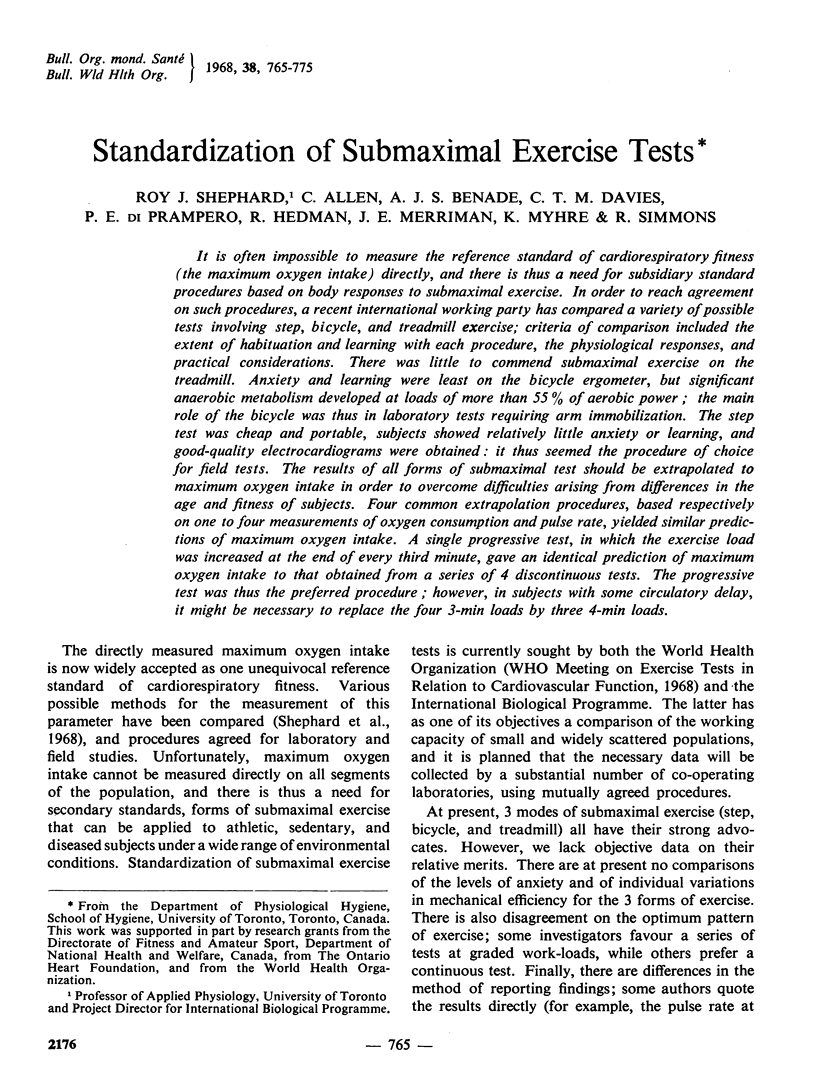
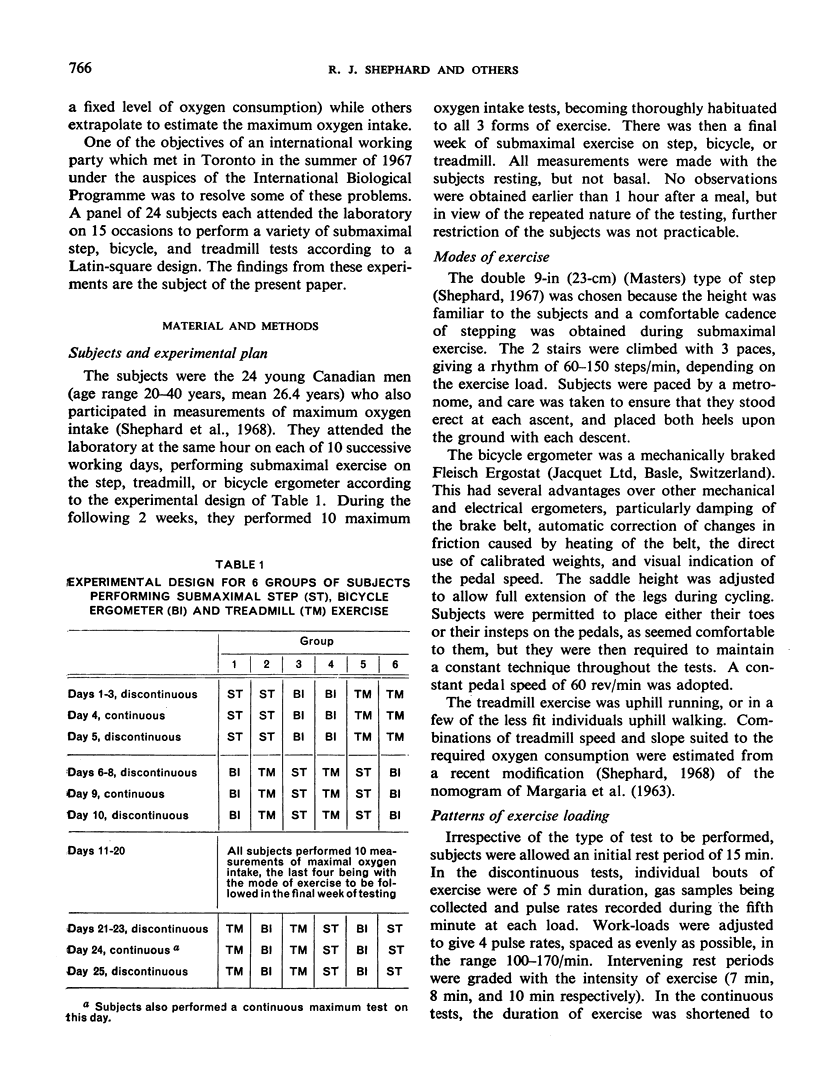
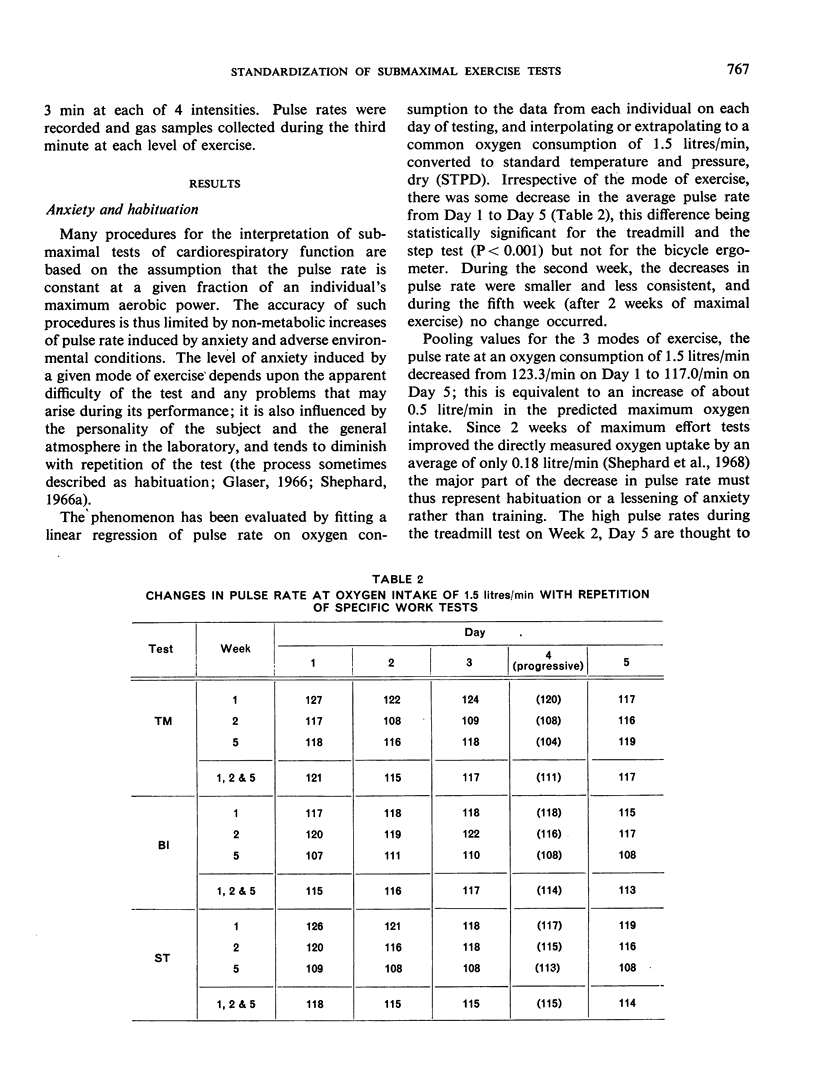
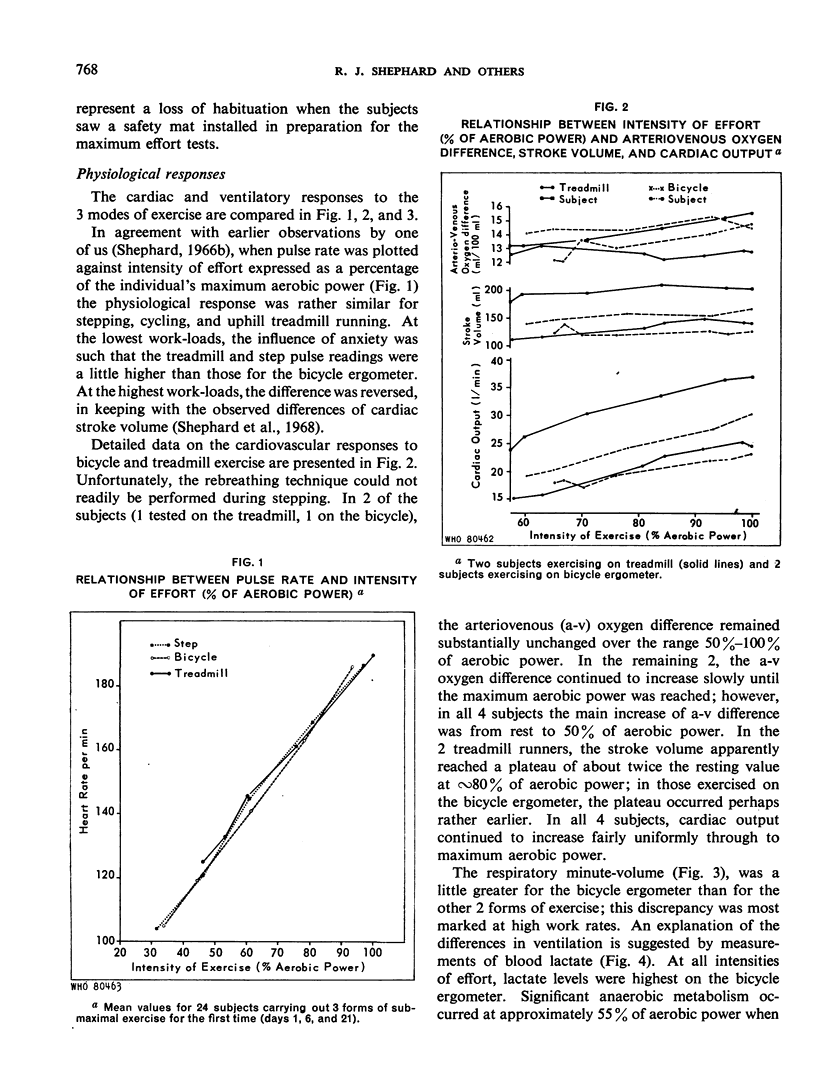
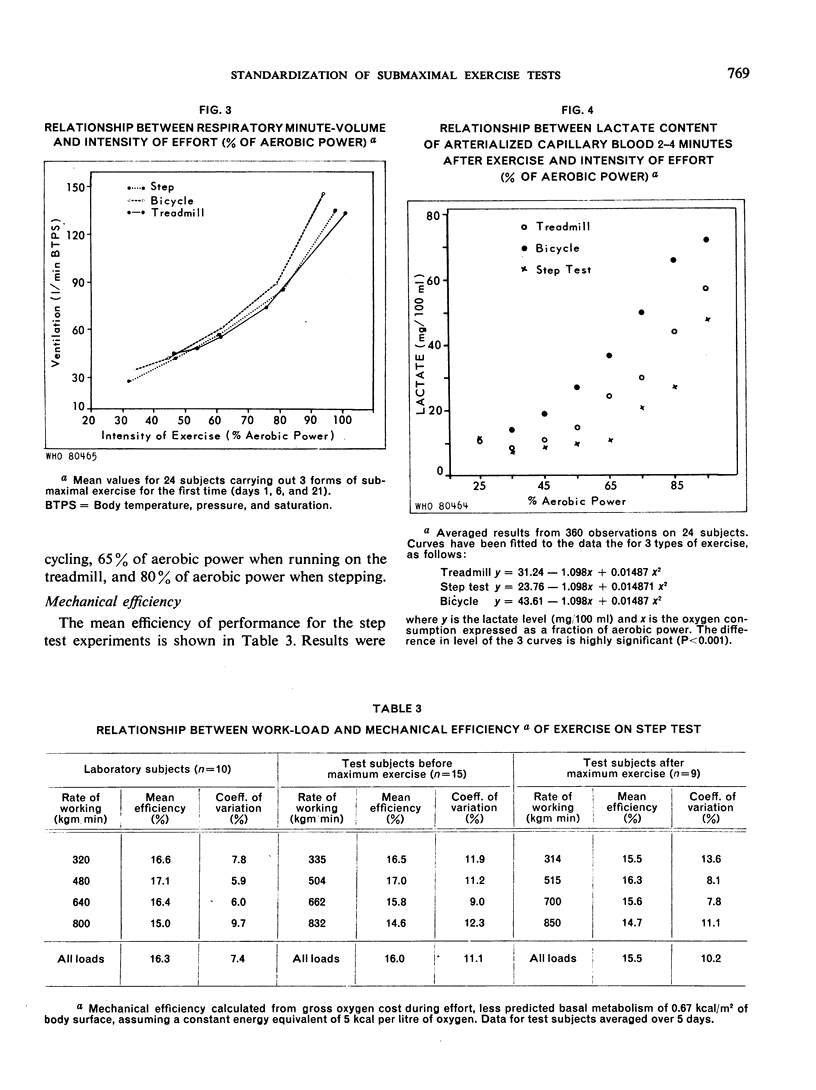
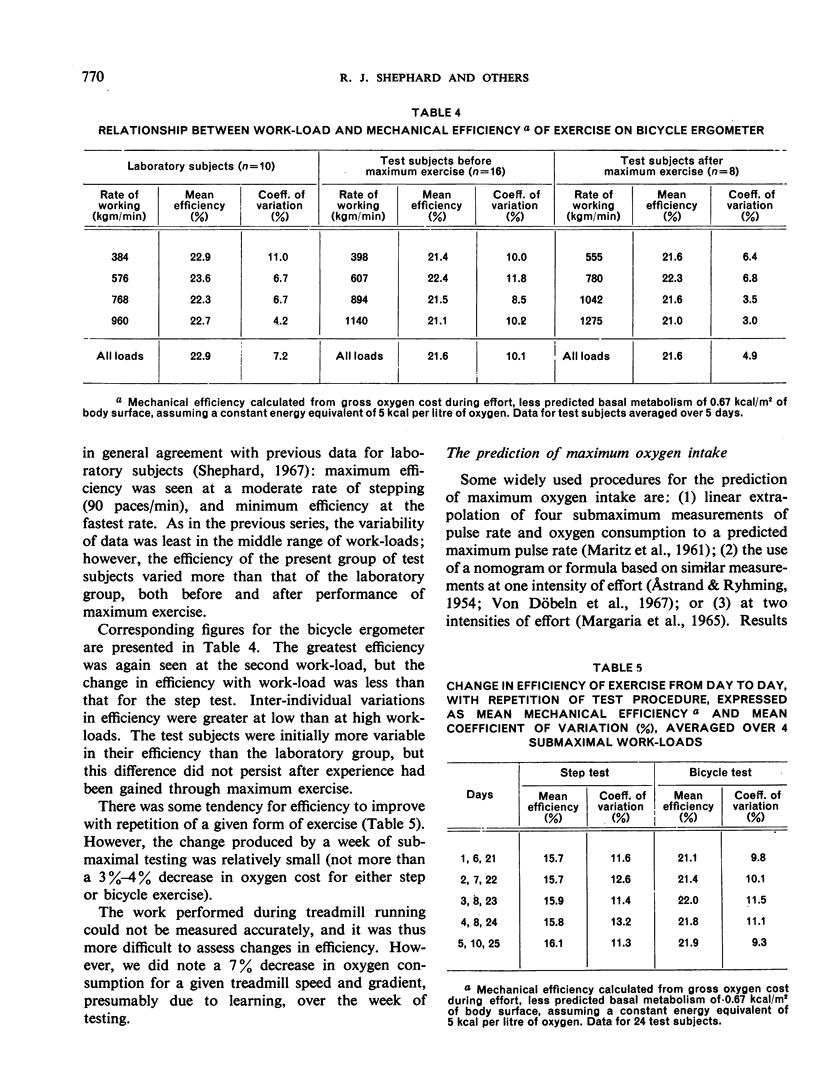
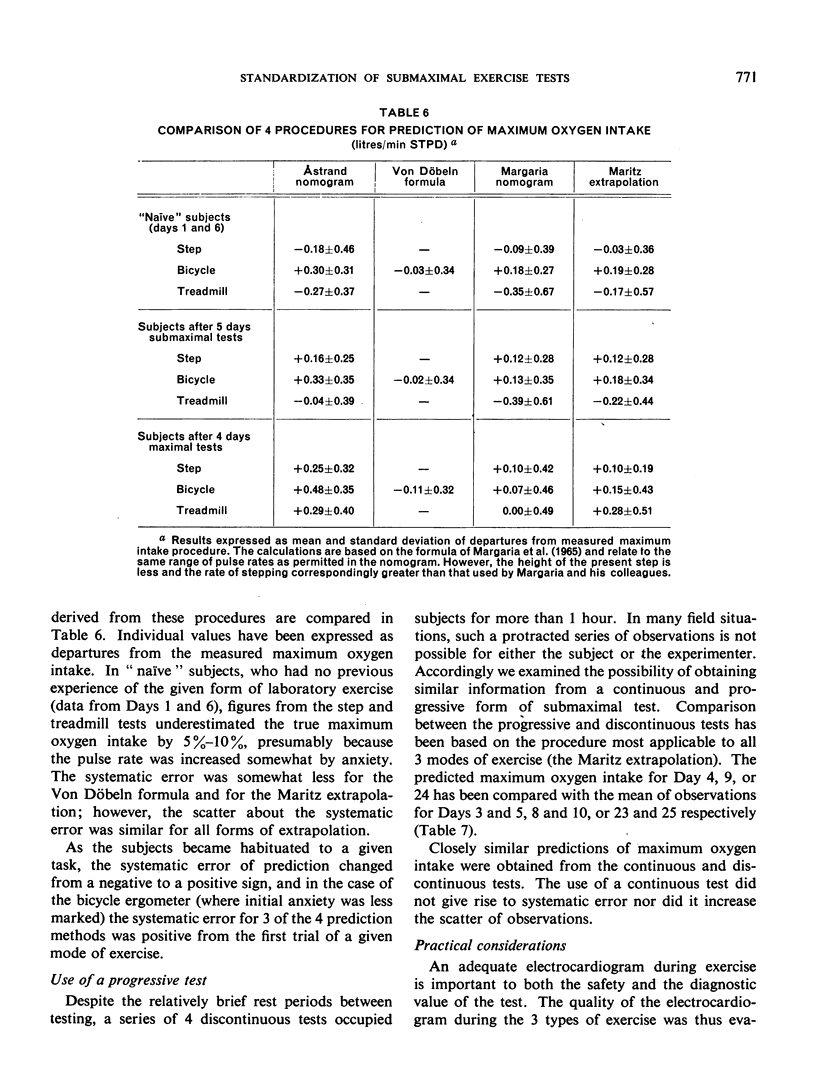
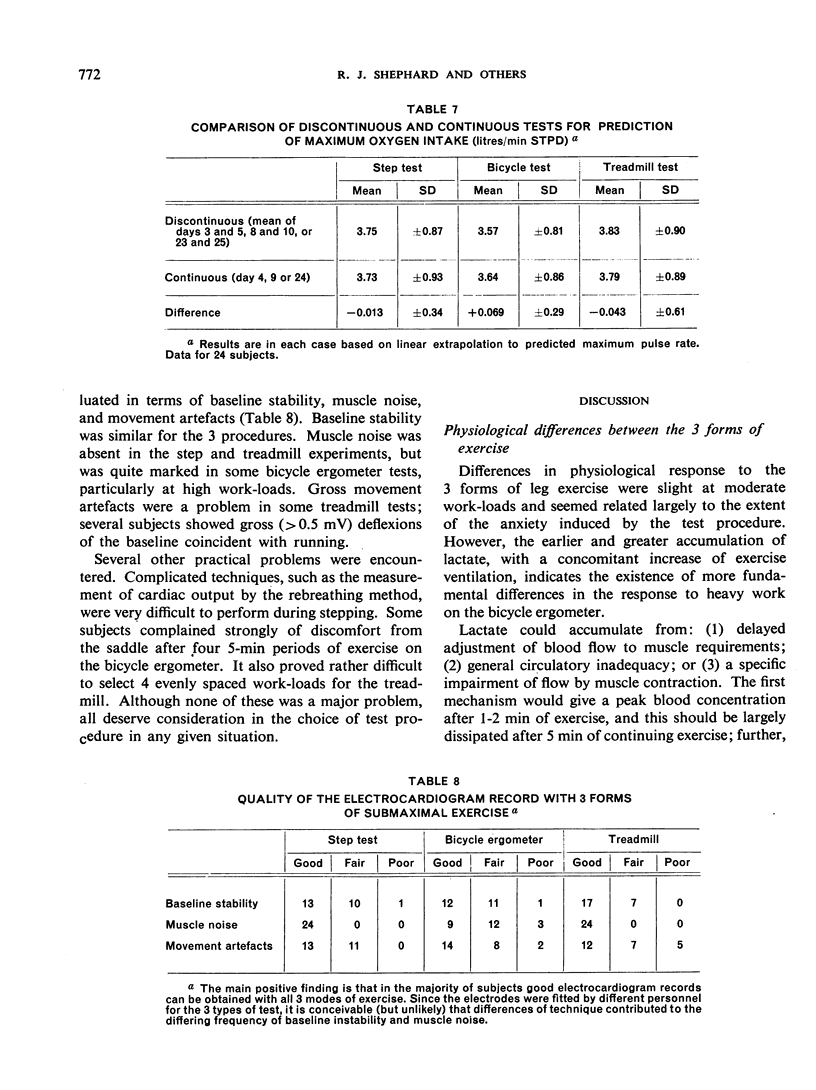
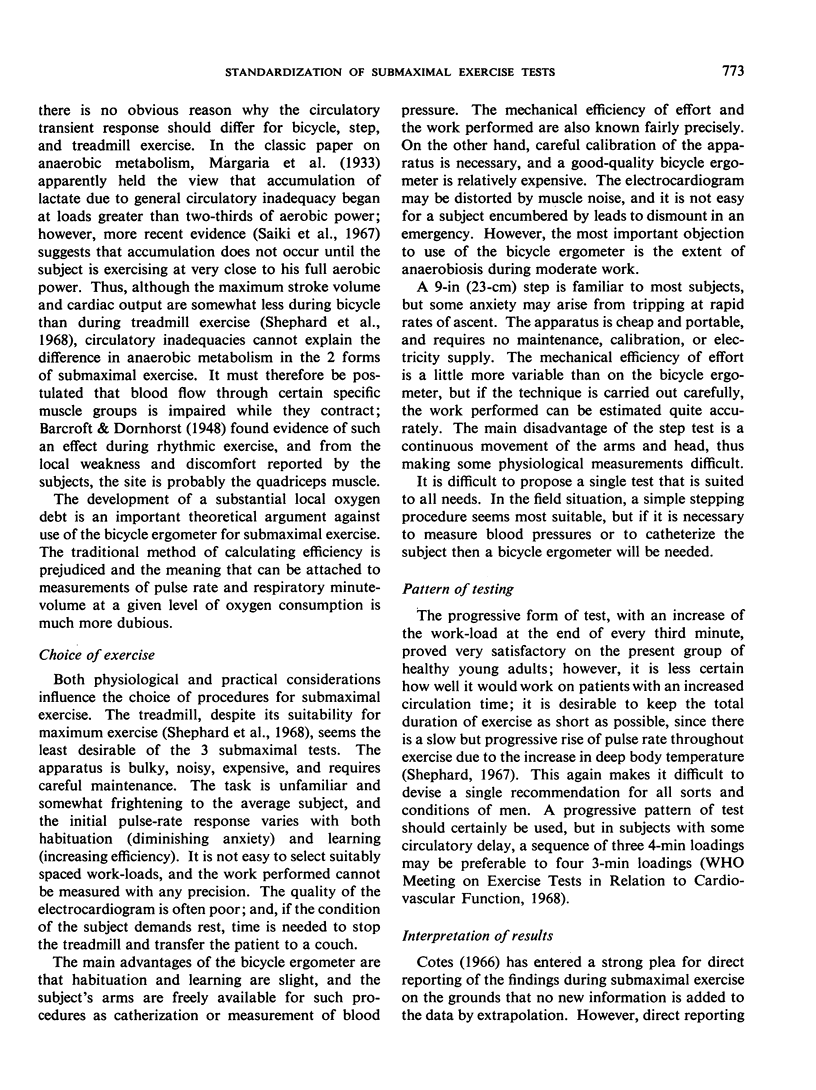
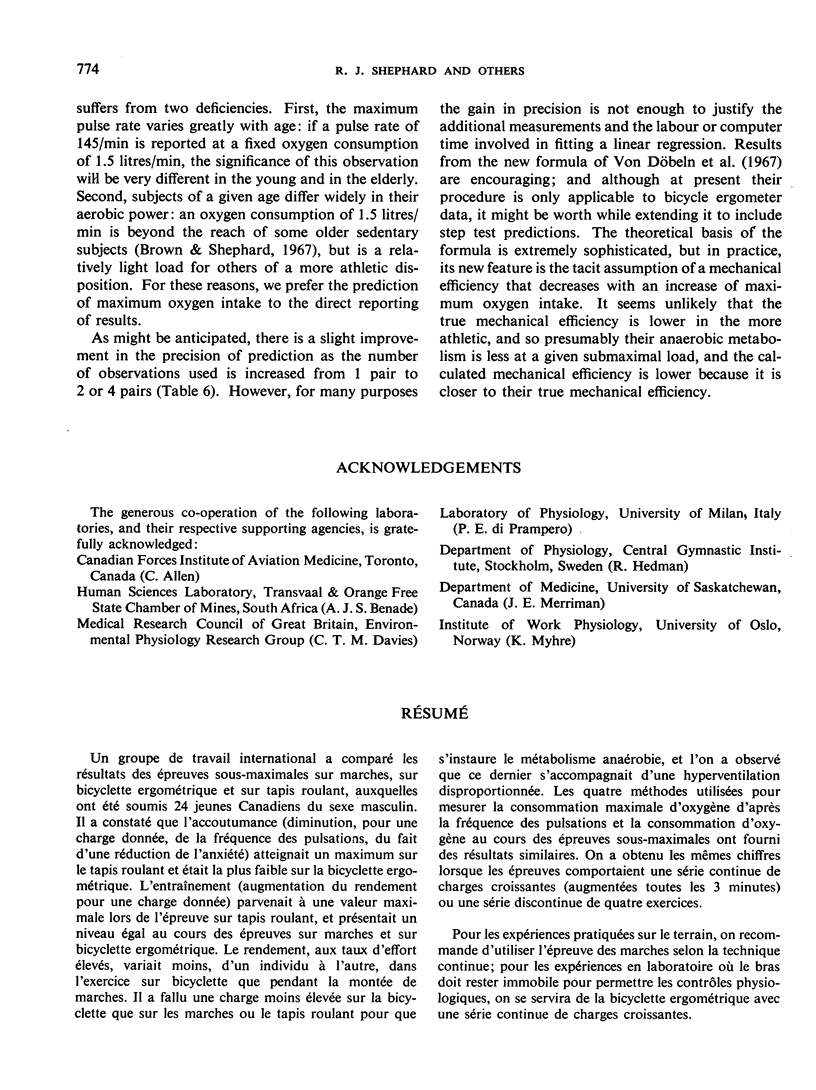
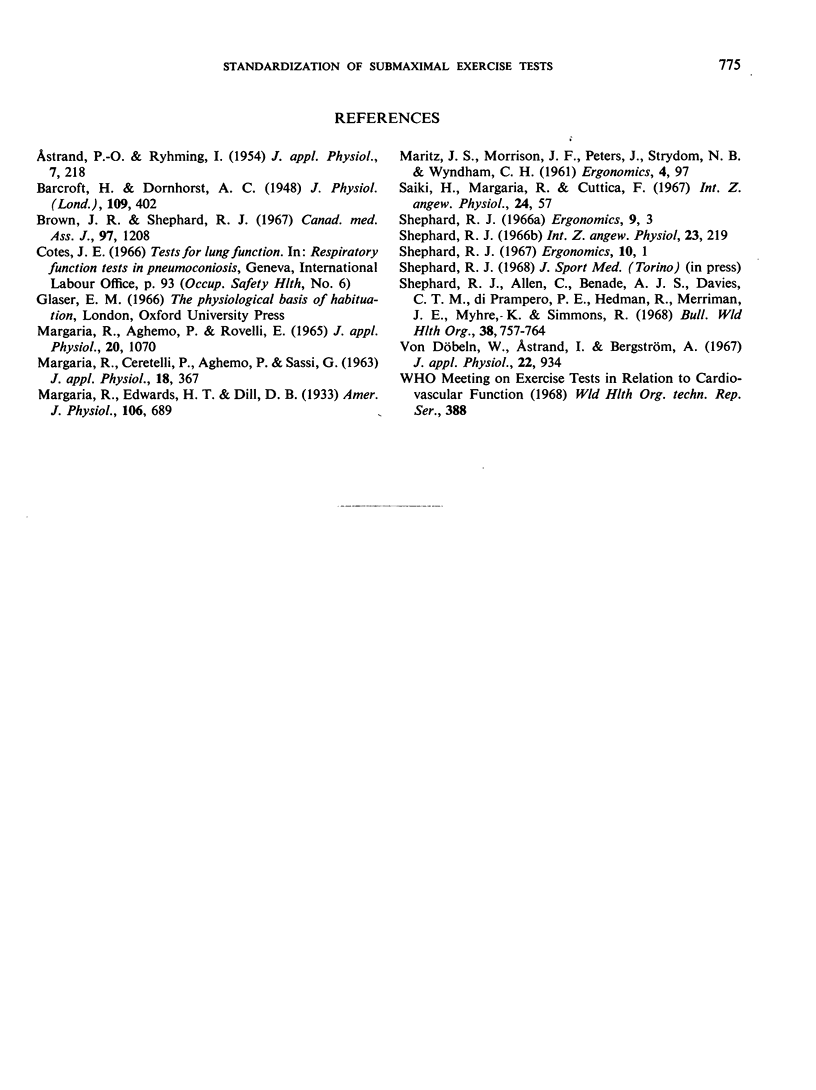
Selected References
These references are in PubMed. This may not be the complete list of references from this article.
- ASTRAND P. O., RYHMING I. A nomogram for calculation of aerobic capacity (physical fitness) from pulse rate during sub-maximal work. J Appl Physiol. 1954 Sep;7(2):218–221. doi: 10.1152/jappl.1954.7.2.218. [DOI] [PubMed] [Google Scholar]
- BARCROFT H., DORNHORST A. C. The blood flow through the human calf during rhythmic exercise. J Physiol. 1949 Sep;109(3-4):402-11, pl. doi: 10.1113/jphysiol.1949.sp004403. [DOI] [PMC free article] [PubMed] [Google Scholar]
- Brown J. R., Shephard R. J. Some measurements of fitness in older female employees of a Toronto department store. Can Med Assoc J. 1967 Nov 11;97(20):1208–1213. [PMC free article] [PubMed] [Google Scholar]
- MARGARIA R., CERRETELLI P., AGHEMO P., SASSI G. Energy cost of running. J Appl Physiol. 1963 Mar;18:367–370. doi: 10.1152/jappl.1963.18.2.367. [DOI] [PubMed] [Google Scholar]
- Margaria R., Aghemo P., Rovelli E. Indirect determination of maximal O2 consumption in man. J Appl Physiol. 1965 Sep;20(5):1070–1073. doi: 10.1152/jappl.1965.20.5.1070. [DOI] [PubMed] [Google Scholar]
- Saiki H., Margaria R., Cuttica F. Lactic acid production in submaximal work. Int Z Angew Physiol. 1967;24(1):57–61. doi: 10.1007/BF00693576. [DOI] [PubMed] [Google Scholar]
- Shephard R. J., Allen C., Benade A. J., Davies C. T., Di Prampero P. E., Hedman R., Merriman J. E., Myhre K., Simmons R. The maximum oxygen intake. An international reference standard of cardiorespiratory fitness. Bull World Health Organ. 1968;38(5):757–764. [PMC free article] [PubMed] [Google Scholar]
- Shephard R. J. Initial 'fitness' and personality as determinants of the response to a training regime. Ergonomics. 1966 Jan;9(1):3–16. doi: 10.1080/00140136608964337. [DOI] [PubMed] [Google Scholar]
- Shephard R. J. The relative merits of the step test, bicycle ergometer, and treadmill in the assessment of cardio-respiratory fitness. Int Z Angew Physiol. 1966 Dec 3;23(3):219–230. doi: 10.1007/BF00693686. [DOI] [PubMed] [Google Scholar]
- von Dôbeln W., Astrand I., Bergström A. An analysis of age and other factors related to maximal oxygen uptake. J Appl Physiol. 1967 May;22(5):934–938. doi: 10.1152/jappl.1967.22.5.934. [DOI] [PubMed] [Google Scholar]


